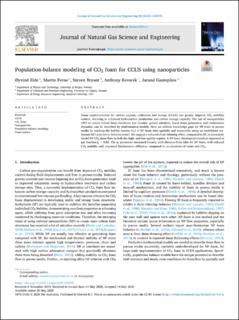Population-balance modeling of CO2 foam for CCUS using nanoparticles
Journal article, Peer reviewed
Published version

Åpne
Permanent lenke
https://hdl.handle.net/11250/2762795Utgivelsesdato
2020Metadata
Vis full innførselSamlinger
Originalversjon
Journal of Natural Gas Science and Engineering. 2020, 80, 103378. https://doi.org/10.1016/j.jngse.2020.103378Sammendrag
Foam implementation for carbon capture, utilization and storage (CCUS) can greatly improve CO2 mobility control, resulting in enhanced hydrocarbon production and carbon storage capacity. The use of nanoparticles (NP) to create robust foam structures has recently gained attention. Local foam generation and coalescence dynamics can be described by mathematical models. Here we address knowledge gaps for NP foam in porous media by tracking the bubble density (nf) of NP foam data spatially and temporally using an established surfactant (SF) population-balance model. We suggest a reduced shear-thinning effect, compared to SF, to accurately model NP CO2 foam flow in both the high- and low-quality regime. A NP foam rheological transition appeared at gas fraction fg = 0.85. The nf parameter increased linearly with distance from inlet for NP foam, with reduced CO2 mobility and improved displacement efficiency compared to co-injections of water and CO2.
